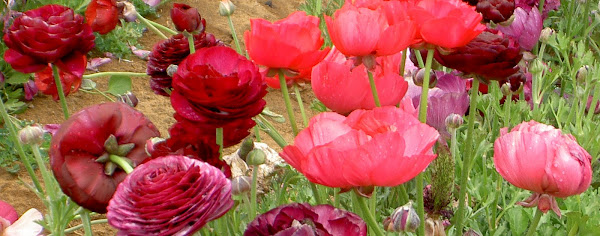 I was in
the wrong aisle at The University of Queensland library, having transposed two
digits in a call number, when I came across a book, Women
of Royaumont: A Scottish Women’s Hospital on the Western Front. I sat down on the floor and started reading Eileen
Crofton’s history of the Scottish women doctors and nurses who took a hospital to
an old abbey in France in World War I. They battled their own British
bureaucrats, the French bureaucracy, the profession of medicine, a crumbling
abbey with no heating or electricity. This hidden history really interested me.
I was in
the wrong aisle at The University of Queensland library, having transposed two
digits in a call number, when I came across a book, Women
of Royaumont: A Scottish Women’s Hospital on the Western Front. I sat down on the floor and started reading Eileen
Crofton’s history of the Scottish women doctors and nurses who took a hospital to
an old abbey in France in World War I. They battled their own British
bureaucrats, the French bureaucracy, the profession of medicine, a crumbling
abbey with no heating or electricity. This hidden history really interested me.
My grandmother died not long
after this. I was in Melbourne, Australia at the time. It was raining and
cold, and after my uncle called to tell me the news, I went to St Patrick's
cathedral and lit a candle. My grandmother had been a magic person in my young
life. She is a magic person in all my memories. She'd trained as a nurse and
might have had a different life if she'd had the kinds of life opportunities
I've had.
These two experiences, finding the
lost history of the women of Royaumont and my grandmother's death, were the
basis for the novel where a young nurse from Stanthorpe, Australia, Iris Crane,
goes to the hospital at Royaumont and her life is changed. Many years later, she’s
invited back to Royaumont and remembers what happened there.
I’ve always
been interested in secrets and the power they come to have over us, the way
family experiences reverberate and change individuals and get smoothed over and
disappear for a time, only to reappear. Iris’s grand-daughter Grace turned up
one day, and came to the door and started bossing poor old Iris around. We
don’t really understand their relationship, and we don’t see how what happened
way back then will impact on Grace’s life now. But we’ll find out.
I read
whatever had been published about Royaumont, memoirs and letters from doctors
and nurses, archival material from the hospital, and then visited the abbey
itself, which is now a cultural centre for France. As I wandered
the abbey - the beautiful refectory, empty now but once the Canada ward, the
cloisters where patients sat on summer evenings, the rooms on the second floor
that became the Elsie Inglis and Blanche de Castille wards – I started to
understand that the abbey itself would become a character in the novel.
 Most mornings, Royaumont was shrouded in mist. A
couple of nights, I was the only person at the abbey. My residency was
between Italian jazz composers and French dancers. The musicians and
dancers were very kind but I couldn’t keep up with their Italian or French
conversations so during my time at Royaumont, I was mostly quiet. I also didn’t
take enough books to read and soon finished the few I’d brought. The books in
the library were in French that was beyond me, so I couldn’t
read. Forster said ‘Only connect’ and at Royaumont, for one of the few
times in my life, I couldn’t truly connect with my fellows, through
conversation or books. It was an odd and unsettling experience but over time, I
became still enough to reflect on the place I’d come to, and the novel is much
stronger for the experience. For Iris, Royaumont is a holy place, a haven
in the midst of the chaos of war.
Most mornings, Royaumont was shrouded in mist. A
couple of nights, I was the only person at the abbey. My residency was
between Italian jazz composers and French dancers. The musicians and
dancers were very kind but I couldn’t keep up with their Italian or French
conversations so during my time at Royaumont, I was mostly quiet. I also didn’t
take enough books to read and soon finished the few I’d brought. The books in
the library were in French that was beyond me, so I couldn’t
read. Forster said ‘Only connect’ and at Royaumont, for one of the few
times in my life, I couldn’t truly connect with my fellows, through
conversation or books. It was an odd and unsettling experience but over time, I
became still enough to reflect on the place I’d come to, and the novel is much
stronger for the experience. For Iris, Royaumont is a holy place, a haven
in the midst of the chaos of war.
I write by hand, filling notebook after notebook
with little scenes and character sketches until I feel ready to pull the novel
together. For In Falling Snow, I did
most of this work on a long residency at the Banff Centre in Canada. Banff gave
the novel much more than its title and now, In Falling Snow is
going home to North America, which gave so much to the writing of the novel.
In Falling Snow was released by Penguin Books on August 27, 2013.


Looks like a great book. I'm putting it on my to-read list.
ReplyDeleteIt does, doesn't it Lizzie. I'm adding it to my list, too. (The publisher didn't send me a copy, or I'd pass it on to you.)
Delete